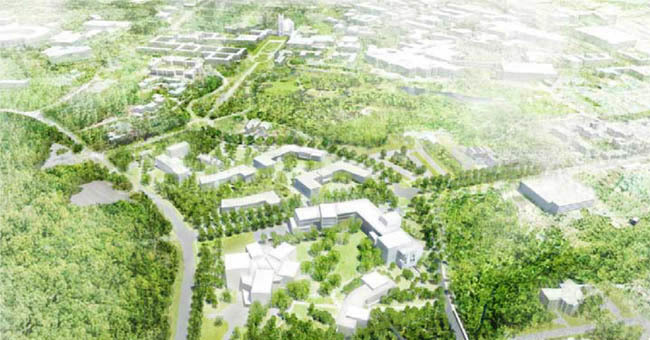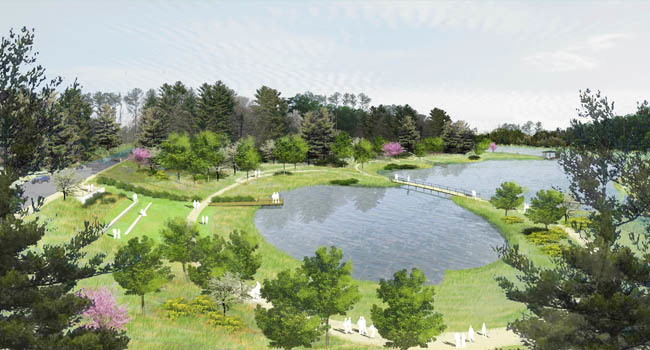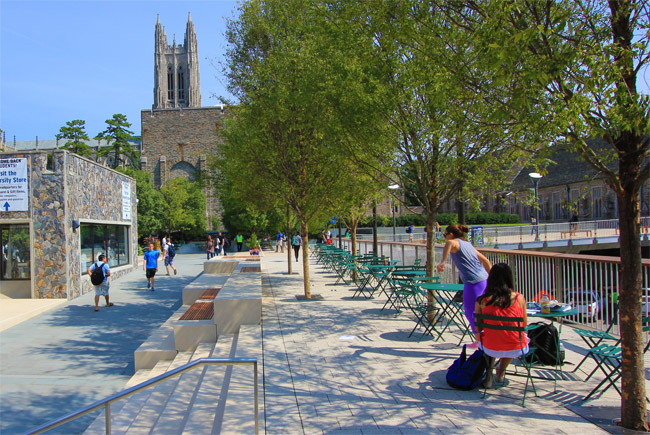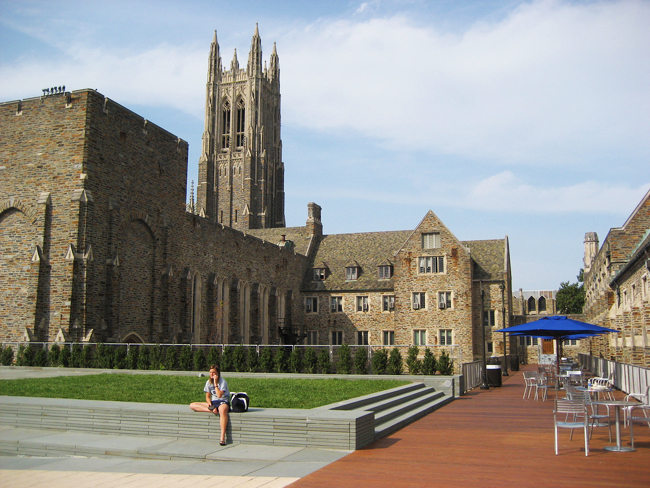In the spirit of ASLA’s promotion of career discovery for National Landscape Architecture Month, I want to give some insight into an important segment of the profession that is not talked about very much: the campus landscape architect. Landscape architects have been working on college and university campuses as design consultants for over a century, but in this other role – working in-house for the schools themselves – they are increasingly making big differences in the long-term stewardship and transformation of these important places. If you are interested in landscapes that are both historic and dynamic, and like the idea of making a significant impact on one special place, then I can’t recommend this career path highly enough.
Before I was hired on as Duke University’s first campus landscape architect fourteen years ago, I had already cultivated an interest in campus design in graduate school, but did not act on it right away. After graduating, I tried the design firm route for a while, but quickly realized that I wasn’t satisfied with designing far off places that I knew I would never experience in real life. A stint at the Central Park Conservancy in New York City, however, gave me a deeper understanding of the value of landscape stewardship and strengthened my resolve to work and live in a campus environment, which eventually led me to where I am today.
 New Campus Master Plan, Duke University, with Reed Hilderbrand and Pelli Clark Pelli Architects
New Campus Master Plan, Duke University, with Reed Hilderbrand and Pelli Clark Pelli Architects
University campuses are complex and dynamic places – like microcosms of entire cities, only with a much higher percentage of green space. In my role, I oversee everything outside of the buildings, including site design, pedestrian and bicycle circulation, wayfinding, transportation systems, sustainability, historic preservation, ecosystem conservation, stormwater management, and the overall aesthetic of the landscape. I make sure the campus evolves in a way that simultaneously respects its historic legacy, successfully integrates contemporary design expression, and incorporates responsible design and maintenance practices that support the university’s commitment to sustainability.
 Stormwater Reuse Pond, currently under construction, Duke University, with Nelson Byrd Woltz
Stormwater Reuse Pond, currently under construction, Duke University, with Nelson Byrd Woltz
While I do not handle all of the detail work by myself – I engage design firms to do most of the big projects – I am involved in the decision making when it comes to what actually gets planned, built and preserved. Most of the work involves intensive collaboration, not only with the firms, but also with students, faculty and others in the university community. This is part of what makes the work so rewarding. Over the past several years, I have had the opportunity to work on campus projects with Laurie Olin, Warren Byrd, Gary Hilderbrand, Michael Vergason, and other talented landscape architects– there are not a lot of jobs that let you do that! I help them understand context and big-picture goals for the university, collaborate on design schemes and help them navigate what can often be a confusing process. The campus landscape architect provides assurance that all projects are tied together in a cohesive way and meet broader goals set for campus development.
 Medical Center Quad, Duke University, with OLIN, photo by Mark Hough
Medical Center Quad, Duke University, with OLIN, photo by Mark Hough
Not all schools have in-house landscape architects, and those that do place them in different roles in various forms of planning and design offices. Because of this, finding your way in the campus job market may not be as direct as with traditional firms or even city parks or planning offices.
Related Story: The Power of Landscape Architecture on the American College Campus
Eva Rose Leavitt, for instance, who is a landscape architect at Stanford University, stumbled upon her job almost by accident in a move she calls “serendipity.” She learned of an entry-level position opening in the Campus Planning and Design office while attending a student outreach meeting for the UC Berkeley Extension program. Intrigued, she applied and was hired.
“I love watching work get built and seeing how the students, faculty and staff use and live in the spaces that are created,” she says. Working in campus landscape architecture offers the opportunity to be part of the whole lifecycle of a project, from design and construction to observing how the space ages day by day. This level of involvement is usually not the norm at most private landscape architecture firms, where designers often move on from a project once construction is complete. “You can learn so much more from being around to see things change,” Leavitt says. “The ability to tweak and refine things so that they succeed is very precious.” This is, in essence, what landscape stewardship is all about: not taking photos once a project is built, but helping places grow and evolve over time.
 Penn Terrace, Duke University, with Reed Hilderbrand, photo by Mark Hough
Penn Terrace, Duke University, with Reed Hilderbrand, photo by Mark Hough
As wonderful as I think the job is, I also recognize that it is not for everyone. People with tender egos might resent having their ideas and decisions credited to consultants or others in the university, which sometimes happens in such a collaborative environment. However, for those with a big picture perspective, an appreciation for the interplay between history and contemporary design, and the patience to wait for the transformation created by the many moves, there are few jobs as rewarding as being a campus landscape architect.
Related Story: April is National Landscape Architecture Month!
 West Campus Plaza, Duke University, with Hargreaves Associates, photo by Mark Hough
West Campus Plaza, Duke University, with Hargreaves Associates, photo by Mark Hough
Lead Image: Duke University West Quad, design by the Olmsted Brothers firm, photo by Mark Hough
Published in Blog










